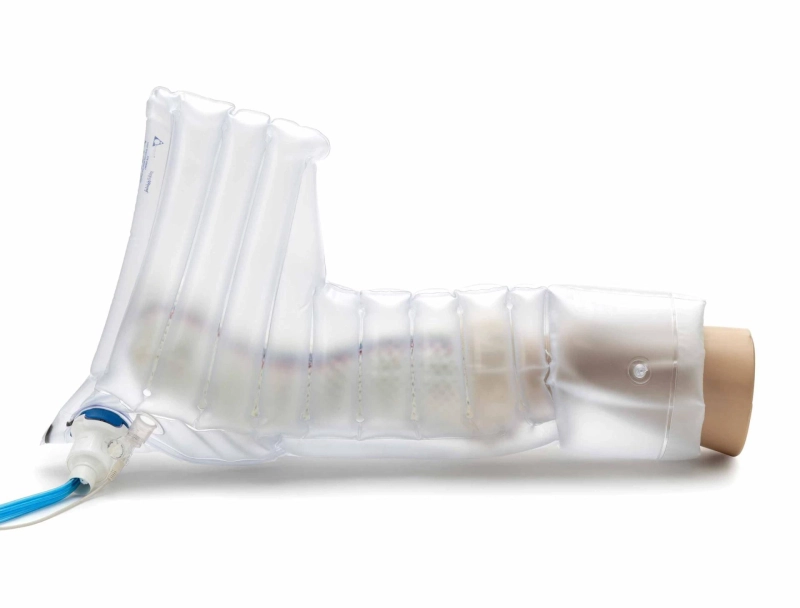Diabetes is a chronic condition that affects millions of people worldwide. Among its many complications, diabetic leg ulcers stand out as a significant concern due to their impact on quality of life and the potential for severe outcomes, including amputation. Diabetic leg ulcers, specifically diabetic foot ulcers, result from a combination of factors, including poor circulation, nerve damage, and immune system deficiencies. This article delves into the nature of diabetic leg ulcers, their causes, prevention strategies, and treatment options, emphasizing the importance of comprehensive care in managing this debilitating condition.
Understanding Diabetic Leg Ulcers
Diabetic leg ulcers are open sores or wounds that occur on the legs or feet of individuals with diabetes. They are problematic because diabetes can impede the body's natural wound-healing processes. These ulcers often develop due to peripheral neuropathy (nerve damage) and peripheral arterial disease (poor blood flow), both common in diabetic patients.
Peripheral neuropathy reduces sensation in the feet, making it difficult for individuals to notice injuries or pressure points that can lead to ulcers. Peripheral arterial disease restricts blood flow, limiting the oxygen and nutrients necessary for wound healing. Together, these conditions create a perfect storm for the development and persistence of ulcers.
Causes and Risk Factors
The primary causes of diabetic leg ulcers include:
Neuropathy: Damage to the nerves, particularly in the extremities, reduces the ability to feel pain, heat, or cold, leading to unnoticed injuries.
Poor Circulation: Diabetes can cause blood vessels to narrow and harden, restricting blood flow to the legs and feet and impairing the healing process.
Hyperglycemia: High blood sugar levels can impair the immune system, increasing infection risk and slowing wound healing.
Mechanical Stress and Trauma: Poorly fitting shoes, minor cuts, and scrapes can quickly develop into ulcers when combined with other diabetic complications.
Risk factors for developing diabetic leg ulcers include long-term diabetes, poor blood glucose control, smoking, obesity, high blood pressure, and a history of foot ulcers or amputations.
Prevention Strategies
Preventing diabetic leg ulcers involves meticulous care and monitoring. Key prevention strategies include:
Regular Foot Examinations: The feet should be inspected daily for any signs of injury, blisters, or calluses. Regular check-ups with a healthcare provider are also crucial.
Proper Footwear: Wearing well-fitted shoes that do not rub or cause pressure points. Special diabetic shoes and insoles can provide additional protection.
Blood Sugar Control: Maintaining optimal blood glucose levels through diet, exercise, and medication adherence.
Foot Hygiene: Keeping feet clean and moisturized but avoiding excessive moisture that can lead to skin breakdown.
Regular Exercise: Engaging in activities that promote circulation, such as walking, swimming, or cycling.
Wound Healing and Diabetes
Wound healing in diabetic patients is often slow and complicated due to the interplay of neuropathy, poor circulation, and immune dysfunction. The stages of wound healing and diabetes can be disrupted in diabetic individuals.
Homeostasis: The initial response to injury involves blood clotting to stop bleeding. High blood sugar levels can impair this process, leading to prolonged bleeding.
Inflammation: This stage involves cleaning the wound of debris and bacteria. Diabetes can result in an exaggerated inflammatory response, delaying healing.
Proliferation: New tissue forms over the wound. Poor circulation can hinder the formation of new blood vessels and tissue.
Treatment Options
Effective treatment of diabetic foot ulcer requires a multidisciplinary approach. Key treatment strategies include:
Debridement: Removal of dead or infected tissue to promote healthy tissue growth.
Infection Control: Use of antibiotics to treat or prevent infections. Topical antimicrobials may also be applied.
Moisture Balance: Keeping the wound moist but not too wet. Hydro gels, hydrocolloids, or foam dressings can help maintain the optimal moisture level.
Offloading: Reducing pressure on the ulcerated area using specialized footwear, casts, or orthotic devices.
Advanced Therapies may include growth factors, skin substitutes, or hyperbaric oxygen therapy to enhance healing.
Blood Sugar Management: Ensuring strict control of blood glucose levels to support the overall healing process.
Conclusion
Diabetic leg ulcers represent a severe and common complication of diabetes, necessitating comprehensive care and proactive management. By understanding the underlying causes, implementing effective prevention strategies, and employing a multifaceted treatment approach, the incidence and severity of these ulcers can be reduced. Individuals with diabetes must work closely with their healthcare providers to monitor their foot health and address any issues promptly to prevent complications and enhance their quality of life.


